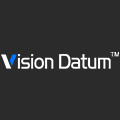Machine vision camera are mainly used in medical auxiliary diagnosis. This type of camera can collect and record images of the human body such as nuclear magnetic resonance, ultrasound, laser, X-ray, γ-ray, etc., and then use digital image processing technology and information fusion technology to analyze, describe and identify these medical images, and finally obtain Producing relevant information plays an important role in assisting doctors in diagnosing the size, shape and abnormality of human disease sources and providing effective treatment.
In general, the application of machine vision cameras in medical treatment provides important help for medical diagnosis.
Here are some applications of machine vision cameras:
- Surgery image collection
- minimally invasive surgery
- Medical Device Part Inspection
- Monitor vital signs
- Equipment cleaning monitoring
- Ophthalmology Diagnosis
- Laser Eye Treatments
- and so on...
Medical assistance currently supported by our Vision Datum
Ophthalmology Diagnosis
Digital camera technology plays a fundamental role in many eye exams and diagnostic methods. As an advanced vision solution, VISIONDATUM camera can provide powerful technical support for various applications, including various eye examinations and diagnosis.
Fundus cameras and OCT cameras are two very important digital camera technologies.
Fundus camera: This is a camera used to capture and record images of the fundus of the eye. Through this camera, doctors can observe the health of the inside of the eyeball, including the retina, choroid, and sclera. Fundus cameras are often equipped with special light sources and lenses to enable clear capture of these structures. These images can be used to diagnose various eye diseases such as diabetic retinopathy, hypertensive retinopathy, macular degeneration, etc.
OCT Camera: Optical coherence tomography (OCT) is a non-invasive medical imaging technology that produces high-resolution images of biological tissue by measuring the interference of light. OCT cameras can produce detailed images of the various layers of the retina, which are valuable for diagnosing and monitoring eye diseases such as diabetic retinopathy, macular degeneration and more.
Digital image acquisition technology allows these cameras to provide high-definition images that accurately capture the details of eye tissue. This not only simplifies documentation but also helps doctors monitor the progression of the disease more accurately. In addition, these images can be transmitted and shared electronically, allowing doctors in different geographical locations to easily communicate and collaborate to provide more comprehensive diagnosis and treatment recommendations.
